How To Keep Your Chickens Comfortable During The Unpredictable Texas Winter Weather
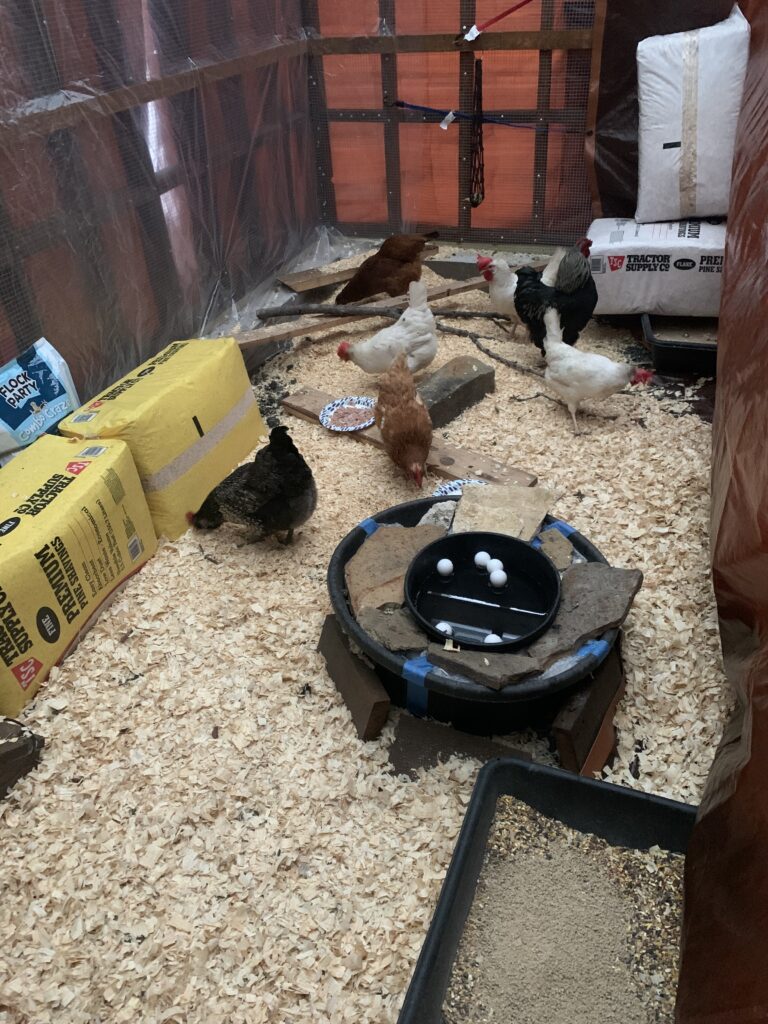
Introduction
In North Texas, the weather is pretty unpredictable. It can turn cold and frosty from one day to the next. If chickens could just get their sweater weather clothes down from the attic like humans, then they could be comfortable right away but unfortunately for them the weather just throws their molting schedule off.
Chickens are very hearty birds! Like many other birds, they can adapt to weather changes but there is a difference between gradually adapting to adapting suddenly. Their instinct to molt kicks in once a year in the fall when the weather begins to feel chilly.
Technically speaking, we could do nothing to assist them because their bodies will eventually adapt but why not be an extra loving chicken keeper and help them stay extra comfortable during the winter weather.
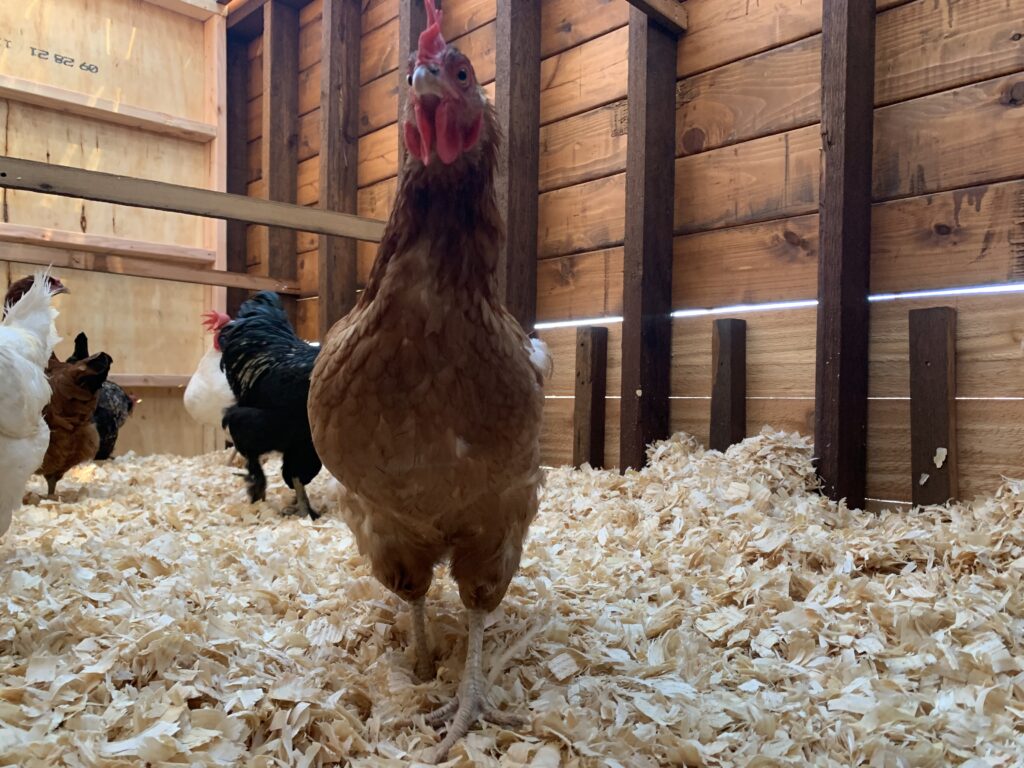
Use the Deep Liter Method
What is the deep liter method? It is a liter method used especially during the winter with the purpose of keeping the chickens warmer during the winter weather. Of coarse there is more to just leaving it! Here is what you have to do.
First, add a 4-6 inch thick layer of pine shavings in their sleeping coop. Second, as the chickens roost and sleep in their coop, they release their droppings. Every couple of days it’s your job to open their sleeping coop and add a layer of shavings onto the fresh droppings. Third, on a weekly basis, use any garden tool strong enough to move all the shavings around and bring some of the fresh shavings from the bottom back to the top.
This method allows the temperature to rise as the droppings are decomposing. It will help your chickens stay a couple degrees warmer and when the night temperatures drop significantly, a couple degrees warmer makes a huge difference for your chickens.
If you feel like it just sounds like alot of work, it’s actually less work because you don’t have to clean out the shavings and replace them completely. Not only does it benefit your chickens with warmth, it saves you time, money and can be used in your compost pile after winter is over.
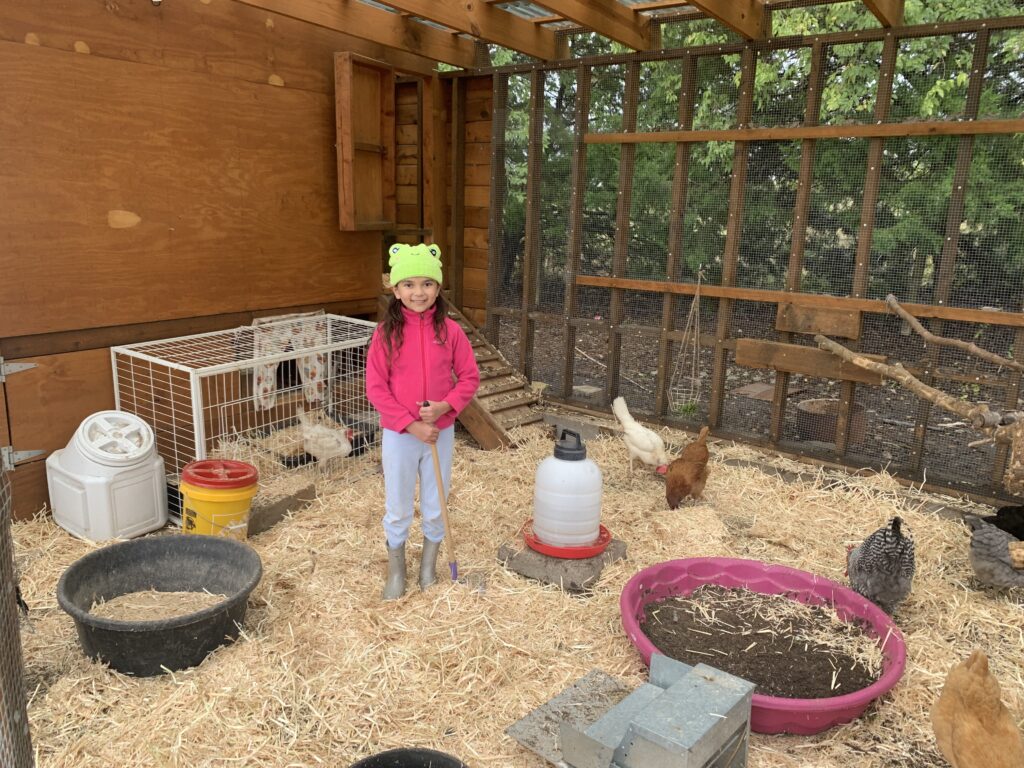
Add Straw and Pine Shavings to the Chicken Run
Do not use hay! I made that mistake once because I had free hay stacks and didn’t do the proper research but the following spring 3 of my hens died. Unlike hay, straw does not compact and harbor mold growth. Straw provides warmth to your chickens by keeping them off the cold floor. Straw is hallow so it fluffs up easily.
Make sure when you check on your hens, you use a rake to move the litter around or if you are wearing your boots as you should, slowly kick the litter around to keep bring dry shavings back to the surface. Moving the droppings within the straw and pine shavings not only gets the decomposition temperatures to start rising but it keeps those little chicken feet from stepping on wet droppings.
Pretty much you can relate this to the deep litter method but inside the chicken run, where the hens spend most of the day. The comfort level in their run is as important as the comfort they need in their sleeping coop.
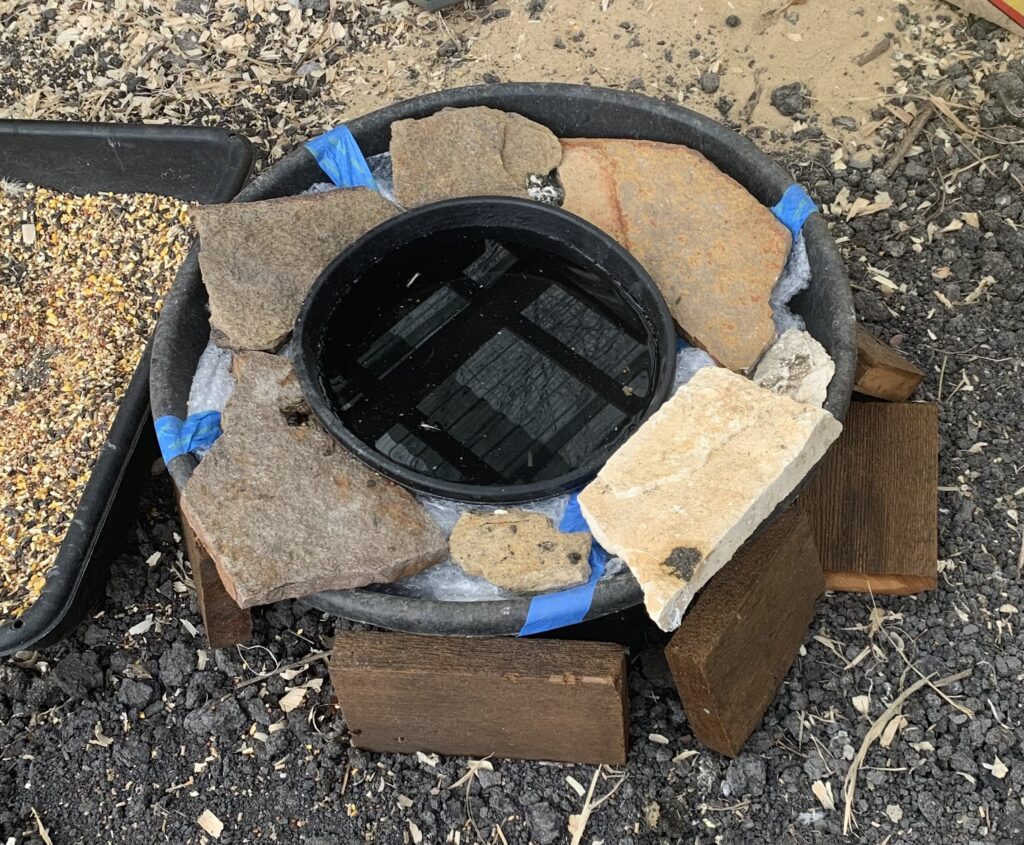
Keep their Water from Freezing
Keeping water from freezing is one of the most important winter tasks because without water, chickens can’t keep warm. Their body needs to intake enough water to create heat and stay warm.
There are many methods to keeping your chicken water from freezing. The use of an electric water heater seems to be the go-to method if you have electricity in your coop. Now that I have access to electricity in the chicken run, I may have to try that option to save time and effort but my previous methods to keeping water from freezing have been without electricity.
What we do is use two thick rubber bins. One smaller bin that fits inside the larger bin. We make sure to add bricks under and small bin and level it so the water doesn’t spill. We add any insulating materials inside the empty space between the large and small bins. I like to use newspaper, rags, bubble wrap, cardboard, or anything you have on hand that wont be eaten by the chickens. We sometimes even add little flat stones so they can stand on while they drink water.
Every morning, we refill two recycled one gallon containers with room temperature to lukewarm water and replace their old water with clean water for the day. We add either their vitamins, apple cider, or fresh crushed garlic in their water ahead of time and rotate the options so they don’t feel overwhelmed with too many additives. We want to make sure they keep drinking water and keep them healthy during the winter.
Ping pong balls work to keep your chickens water from freezing during the day. Every time your chickens drink water or curiously peck at the ping pong balls, they move the water so that keeps the water from freezing.
Every day the temperatures are below freezing, my son and I take turns walking to the coop in the afternoon and checking on the chickens. We check that their water isn’t frozen again and to avoid two trips, we go ahead and take a pitcher of hot water to warm up the water again. We also, check their food and comfort levels to see if they could use anything else to stay happy.
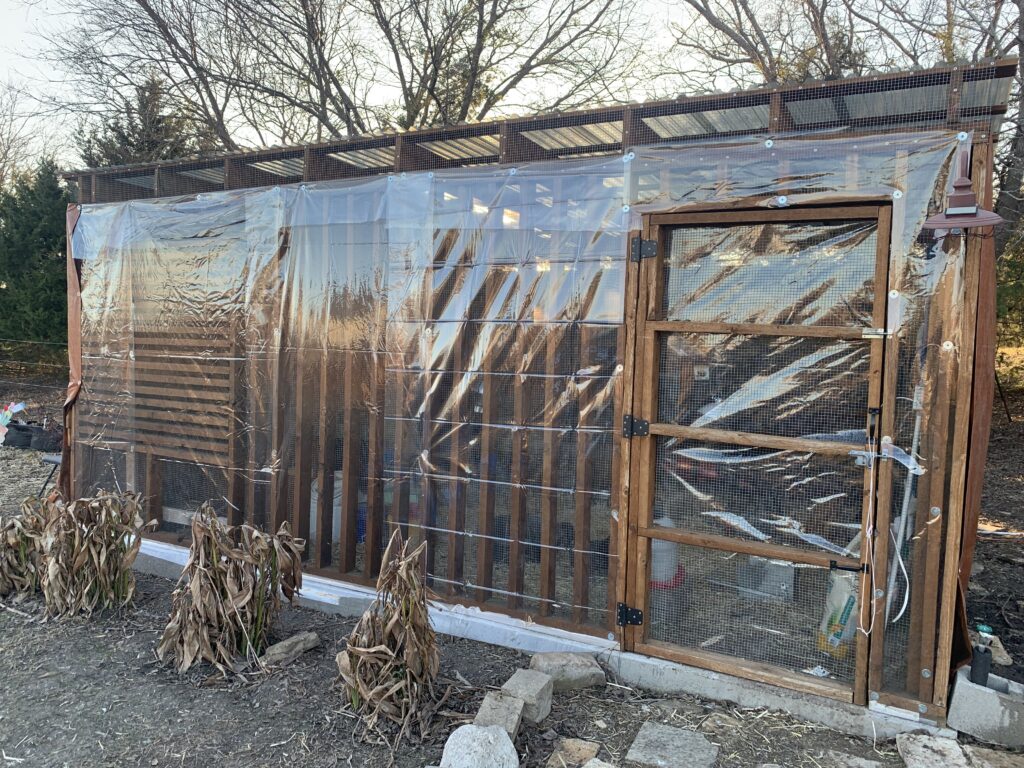
Block Out the Wind
Wind has the reputation of turning any cold day into an even colder day! Chickens will hide their face and feet inside their feathers when it’s too cold and windy. They will even start shivering to warm up or fluff up their feathers to create small air pockets as insulation to stay warm.
To help keep our chickens from over working their body to keep warm, it’s important to block out the wind as best as we can without compromising a well ventilated coop and chicken run. Depending on the size of your coop, this can be an easy task or a harder one for that matter.
Some materials that can be used are heavy duty tarps, clear thick vinyl, screws, washers, a drill with correct drill bit for your screws and perhaps even a ladder. The combination of tarps and clear thick vinyl is mostly for the purpose of the chickens receiving some natural warmth and light from the sun. No one likes to be in the dark all winter long!
When buying your tarps, make sure it’s large enough to cover from bottom to top, leaving a small gap on the top for air ventilation. Same with the clear vinyl, make sure you are able to cover most of the surface of your chicken run from bottom to top, leaving a small gap on the top to allow air to flow out and avoid moisture from building up.
If possible, don’t buy a larger tarp than you need. Rodents will use the bottom of the tarp to nest in and stay warm. Even if you roll up your tarps and zip tie them tightly, they still seem to find a way in. We usually have field mice in our area, so those tiny animals squeeze through pretty much anything. They even made it inside my husband’s truck twice and made a nest inside his truck during the winter. That’s a whole different story.
When installing your tarps for the winter make sure to start from the bottom to make sure you close all the gaps. Leave the clear vinyl for the side that receives morning sun so the chickens can feel the warmth and have the ability to see outside. You may have to custom close your entrance door the best possible way since you still want easy in and out access. Most importantly, do this on time! Putting up tarps in the cold is not a fun task!
Ventilation is Needed
Ventilation is important year round in a chicken coop. It keeps chickens happy and healthy. In the winter though, having proper ventilation is crucial to avoid moisture build up especially in the sleeping coop. In the case that the air doesn’t flow, your chicken’s breathing will create moisture build up around their beaks and combs which in turn will freeze at temperatures below freezing. Moisture will also build up on the chicken litter and create a breeding ground for bacteria and mold.
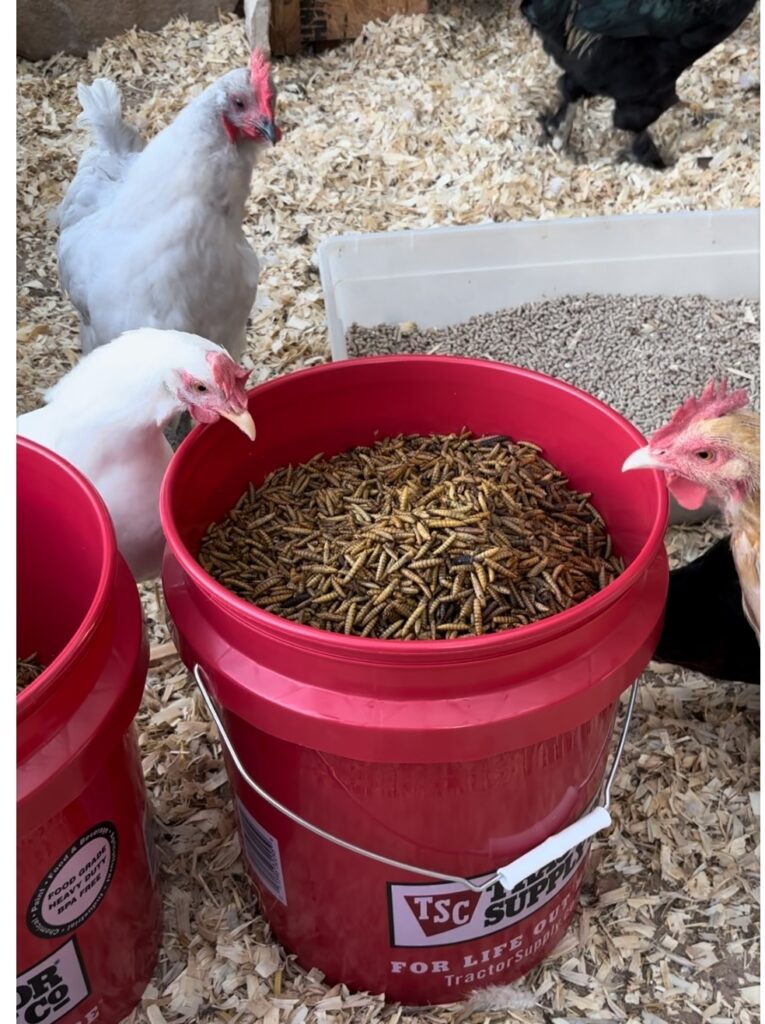
Layer Feed & Protein Keeps Chickens Warm
During the winter months, chickens need more energy to stay warm. It’s important to make sure they have enough layer feed readily available for them to eat but increasing their protein intake will help them create enough heat to regulate their body heat. Of coarse, also be mindful not to over feed them protein because it can affect their health. Keep it balanced!
Some protein options you can give your chickens include, dried black soldier fly larvae, dried meal worms, canned tuna, canned sardines, scrambled eggs, alfalfa hay, sunflower seeds, pumpkin seeds, oats, and dried cracked corn. Because there are little to no bugs during the winter, it’s important to suppliment with other protein fill options to keep your chickens happy and healthy. Remember, if your chickens don’t have enough energy from their feed and protein, they will use it all for energy and their egg production will suffer.
Heater Panels Don’t Work!
Don’t waste your money on chicken heating flat panels. I bought a pair that was top rated and they failed to keep our chickens warm during the coldest below freezing nights. Temperatures were to be in low teens a couple of nights in a row and I was of coarse worried for my hens because of the drastic temperature drop.
My husband and I installed flat panels inside the sleeping coop and the temperature didn’t change at all. I was monitoring the temperature with wireless thermometers and the flat heater panels made no difference for our chicken coop. When we went to personally check on our birds, we saw them shivering rapidly, so much that I felt like they were not safe outside. I put my hand against the heater and I hardly felt any warmth radiating from it. It was not worth the $100 per panel I paid so of course I returned them.
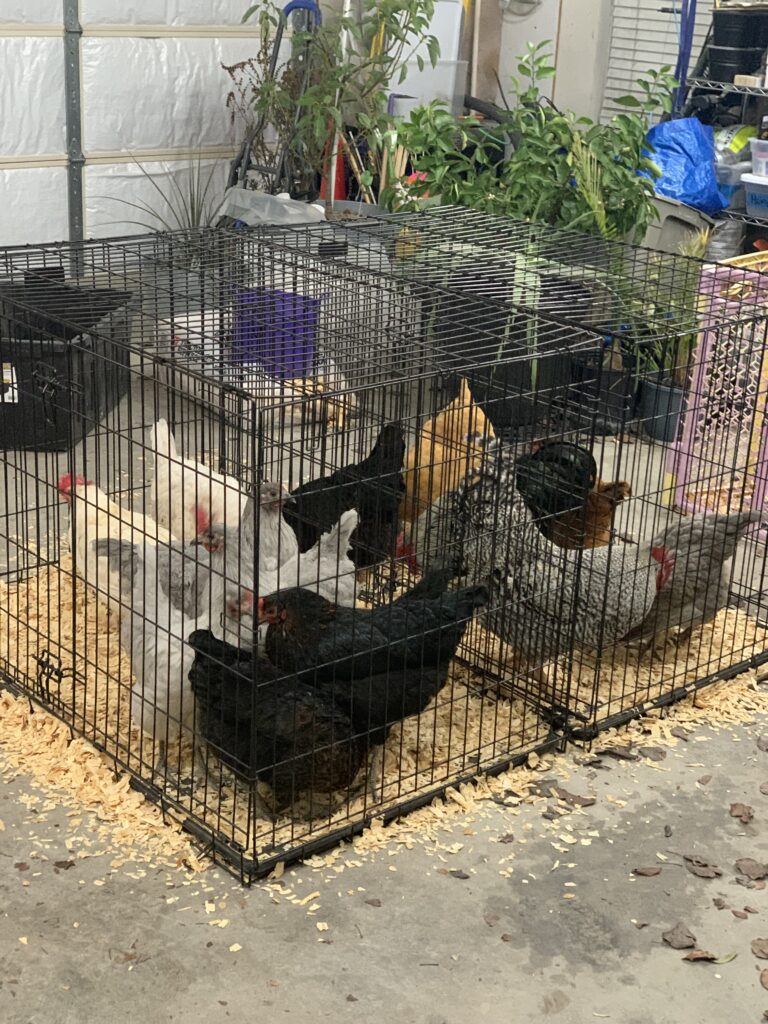
Garage Sleepover
In the case of an emergency cold night, you could always keep your chickens in your car garage. I have gone through so many winters where I still sometimes end up having our hens sleep in our garage. This is why I always have cages readily available for them in case of a last minute sleepover or sometimes I even borrow the dog crates for a couple nights to make it easier for me.
Pretty much, I just take my vehicle out to make space and put two crates with a small layer of straw to keep the chickens from sliding around and catch their droppings. Then I group the chickens that get mostly along and separate the roosters. Once the lights are off, there is no fighting or complaints because they can’t see in the dark until the morning when the sunlight starts to shine in through the windows.
The next morning, I put them in large tote bins with the lid slightly open so they can breath but not jump out, then my son and I put the two bins inside the back of my highlander and drive them to the chicken run. Easy-Peasy-Lemon-Squeezy!
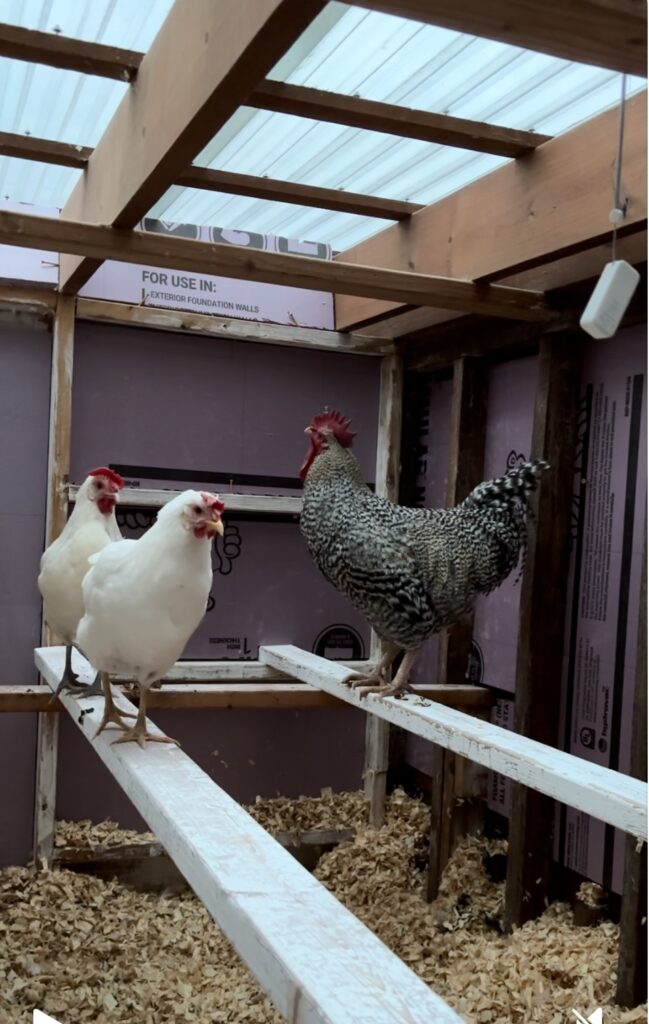
Insulate Your Sleeping Coop
Seeing my chickens shiver forcefully last winter made me take the extra step this year to insulate the chicken sleeping coop to hopefully omit the emergency garage sleepovers. Depending on the size of your coop, it is fairly quick and easy to accomplish.
Using foam board from the home improvement stores was our go-to route. We took measurements, and using a new sharp blade we cut the sizes needed to insulate our chicken coop wall. The use of a couple screws here and there were needed to hold some pieces that didn’t fit snuggly. Make sure you leave your ventilation hole open on the top for proper air flow otherwise respiratory problems can arise in your flock.
We did not worry about the look being perfect, for it’s only for 2-3 months. During the summer we will be removing the foam board since summers here are longer and hotter. Storing them for the next winters will save you from rebuying them next winter.
One problem with insulating your chicken coop walls is that chickens will peck at the insulation if you don’t cover it. I noticed some chickens like to peck at the foam more than others. Even though it seems like they did not die from pecking at the foam, it’s not recommended to leave it uncovered, especially the easy to reach areas.
Using these foam boards made a huge difference. The wireless temperature thermometer I have, showed that there was a more or less 10 degree difference inside the sleeping chicken coop during the night compared to the feels like temperature outside. I must say, I feel like this winter will be a lot easier! It’s like a load taken off your shoulders and no more sleepless nights thinking of your chickens winter comfort!
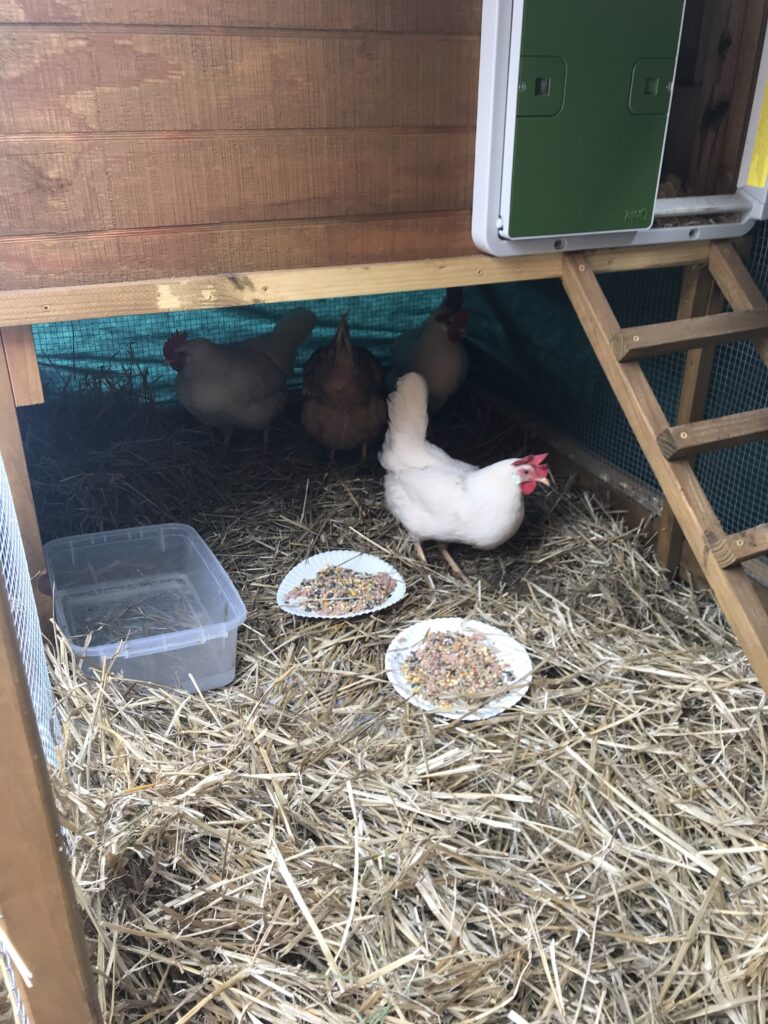
Conclusion
Is taking extra steps to winterize your chicken coop hard work? Yes! I’m not going to sugar coat it at all but when it comes to keeping your hens happy, you will really end up doing everything you can not just during winter but all year round. When you love your chickens as much as we do in our family, you keep them happy and you make your life easier.
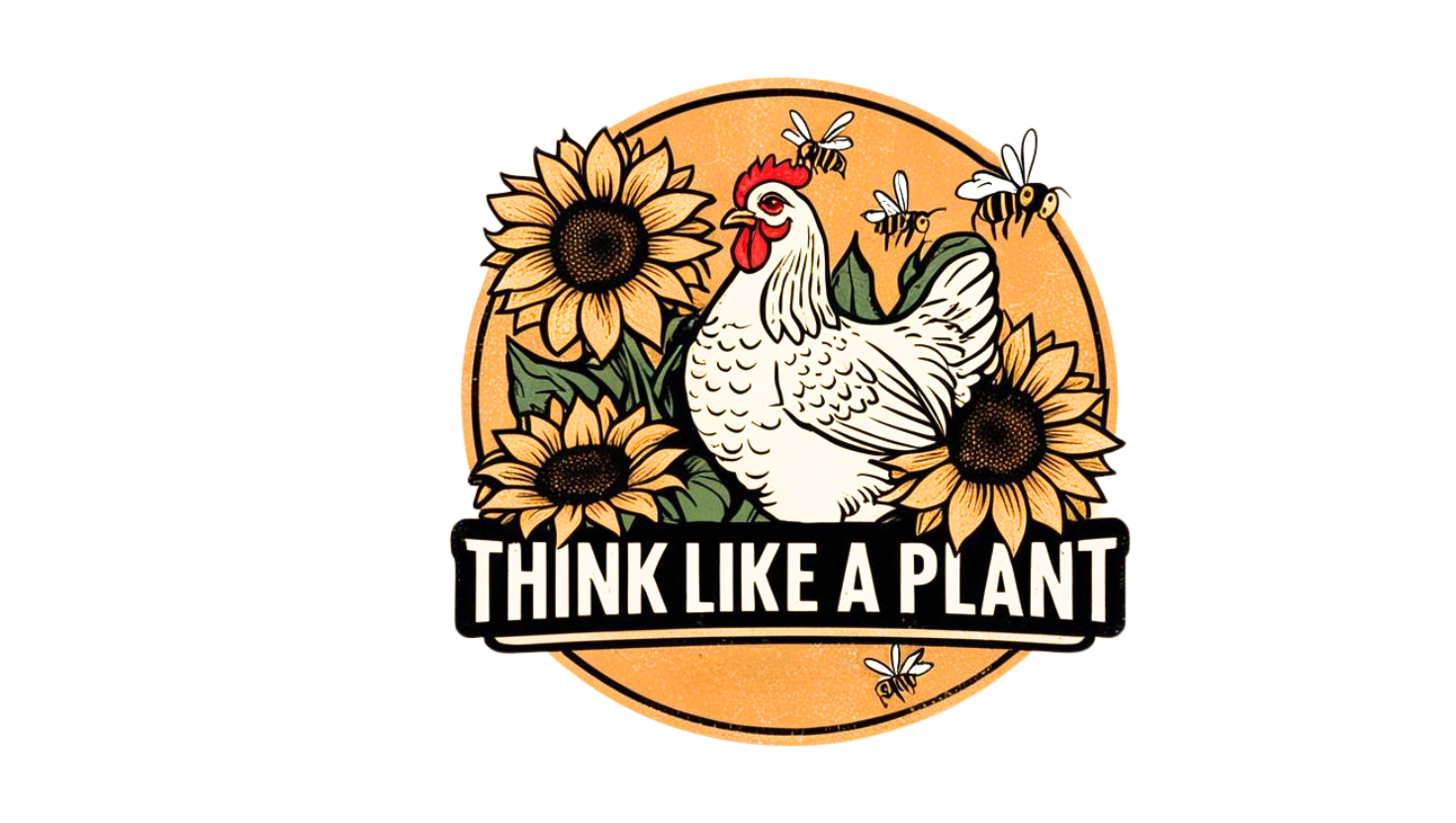
Thank you for all these ideas! We’re getting another “artic blast” next week here in San Antonio and we need all the help we can get for our ladies!
I’m so happy to be of help! Thank you! I hope your ladies feel comfortable throughout the rest of the winter days! Let’s hope spring weather comes sooner than later!